Debunking Thread Count Myths: What Really Matters for Quality Sheets
Introduction
Ever been dazzled by high thread count numbers on bed sheets? You’re not alone. Many believe that a higher thread count equals better quality, but is that really the case? In this guide, we’ll debunk common thread count myths and help you understand what truly matters when selecting quality sheets. Get ready to transform your sleeping experience with the right knowledge!
Below are some bedding options that I love.
Understanding Thread Count
Definition of Thread Count
Thread count refers to the number of threads woven into one square inch of fabric, both vertically (warp) and horizontally (weft). It’s often marketed as a primary indicator of sheet quality, but there’s more to the story.
Explanation of Vertical and Horizontal Threads:
- Warp Threads: These are the threads that run lengthwise.
- Weft Threads: These are the threads that run crosswise.
Ideal Thread Count Range
So, what thread count should you look for? The ideal range is typically between 200 and 600, depending on the material and weave. Sheets within this range can provide a balance of softness, durability, and breathability.
Recommended Thread Counts:
- Percale Weave: 200-400
- Sateen Weave: 300-600
Higher isn’t always better. Beyond a certain point, a higher thread count can actually indicate lower quality due to the use of multi-ply threads or thread manipulation.
Common Thread Count Myths
Myth 1: Higher Thread Count Means Better Quality
This is probably the most pervasive myth. While a higher thread count can mean a denser weave, it doesn’t necessarily mean better quality. The quality of the threads themselves and how they are woven is much more important.
Impact of Thread Quality:
- Higher-quality threads result in softer, more durable fabric.
- Lower-quality threads, even in high counts, can produce sheets that are rough and prone to pilling.
Examples of Misleading High Thread Counts:
- Sheets marketed as 1000 thread count but using multi-ply yarns, which can make the fabric bulky and less breathable.
Myth 2: All High Thread Count Sheets are Soft and Durable
Not necessarily. Softness and durability depend more on the type of fiber and the weave than on the thread count alone.
Factors Affecting Softness:
- Fiber Type: Egyptian cotton is known for its softness.
- Weave: Sateen weave typically feels softer than percale.
Importance of Fiber Type and Weave:
- High-quality fibers like long-staple cotton make a significant difference.
- The weave affects how the fabric feels against your skin.
Myth 3: Low Thread Count Means Poor Quality
Low thread count doesn’t automatically mean poor quality. Many high-quality sheets with lower thread counts can be exceptionally comfortable and durable.
High-Quality Low Thread Count Sheets:
- Linen Sheets: Often have lower thread counts but are extremely durable and breathable.
- Percale Sheets: Crisp and cool with thread counts as low as 180.
Benefits of Lower Thread Counts:
- Better breathability, which is crucial for hot sleepers.
- Often more affordable without sacrificing quality.
What Really Matters in Quality Sheets
Fiber Type
The type of fiber used is one of the most important factors in determining the quality of sheets.
Popular Fiber Types:
- Cotton: Egyptian, Pima, and Supima cotton are premium choices known for their softness and durability.
- Linen: Highly breathable and durable, ideal for hot climates.
- Bamboo: Soft, sustainable, and hypoallergenic.
Why Egyptian and Pima Cotton Are Popular:
- Egyptian Cotton: Known for its long fibers, which create smoother and stronger yarns.
- Pima Cotton: Also has long fibers, offering similar qualities to Egyptian cotton at a lower price.
Weave Type
The weave of the fabric affects its texture, durability, and overall feel.
Common Weave Types:
- Percale: Crisp and lightweight, with a matte finish.
- Sateen: Smooth and silky with a slight sheen.
Best Weaves for Different Preferences and Climates:
- Percale: Ideal for hot sleepers or those who prefer a cool, crisp feel.
- Sateen: Better for those who want a soft, cozy feel.
Finishing Processes
The treatments and finishes applied to sheets can impact their feel and performance.
Common Finishing Processes:
- Mercerization: Strengthens the fibers and adds a sheen.
- Calendaring: Smooths the fabric, making it look glossy.
Pros and Cons of Treated vs. Untreated Sheets:
- Treated Sheets: Often smoother and more lustrous but may lose these qualities over time.
- Untreated Sheets: Natural feel and more breathable, though they may wrinkle more easily.
Tips for Choosing Quality Sheets
Reading Labels and Descriptions
Understanding what to look for on labels can help you make an informed decision.
Key Terms and Indicators of Quality:
- Long-staple fibers: Indicate higher quality cotton.
- Single-ply yarns: Provide a smoother, finer fabric.
Understanding Manufacturer Claims:
- Be wary of extremely high thread counts.
- Look for detailed descriptions of materials and weaves.
Testing Sheet Quality
There are simple methods to test the quality of sheets before purchasing.
The Feel Test:
- Run your hand over the fabric to check for softness and texture.
- High-quality sheets should feel smooth and free of imperfections.
Checking for Durability:
- Hold the fabric up to the light to see how dense the weave is.
- Gently stretch the fabric to test its resilience.
Maintaining Your Sheets
Proper care can prolong the life of your sheets and maintain their quality.
Washing and Drying Tips:
- Use mild detergent and avoid bleach.
- Wash in cold or warm water to prevent shrinking and fading.
- Tumble dry on low or line dry to maintain the fabric’s integrity.
Storage and Handling Advice:
- Store sheets in a cool, dry place.
- Avoid overcrowding to prevent wrinkles.
Recommended Brands and Products
Top Sheet Brands
Some brands are known for consistently producing high-quality sheets.
Trusted Names in Quality Bedding:
- Brooklinen: Offers a variety of weaves and fibers.
- Parachute: Known for its high-quality, eco-friendly sheets.
- Boll & Branch: Focuses on organic, fair-trade cotton sheets.
Product Recommendations
Finding the best sheets for your needs can make a significant difference in your sleep quality.
Best Sheets for Hot Sleepers:
- Brooklinen Classic Percale: Crisp and breathable.
- Parachute Linen: Naturally cooling and durable.
Best Budget-Friendly Options:
- Mellanni Microfiber Sheets: Soft and affordable.
- AmazonBasics Microfiber Sheets: Great quality for the price.
Luxury Picks for Ultimate Comfort:
- Frette Hotel Classic Sheet Set: Used in luxury hotels worldwide.
- Boll & Branch Signature Hemmed Sheets: Sumptuous and ethically made.
Conclusion
For years, consumers have been conditioned to believe that a high thread count equates to high-quality bedding. Retailers have pushed this narrative with clever marketing and flashy packaging, leading many to overlook the essential elements that truly define luxurious sheets: the quality of the cotton, the weave, the craftsmanship, and—perhaps most importantly—the way it makes you feel when you sink into bed.
Let’s be honest: the idea that a 1,000-thread-count sheet is automatically better than a 400-thread-count one is a seductive but misleading promise. What matters far more than the thread count is the type of fiber used (like long-staple Egyptian or Pima cotton), the weave (such as percale or sateen), and the integrity of construction. A well-made 400-thread-count percale sheet made from long-staple cotton will outperform and outlast a cheap, inflated 1,000-thread-count set made from inferior fibers every time. Not only will it feel better, but it will breathe better, wash better, and age more gracefully.
Luxury should never be reduced to a number—it should be experienced with all the senses. True comfort comes from choosing pieces that align with your personal values, aesthetic, and lifestyle. At Nikki Anne Luxury Living, we believe in helping you cultivate a home that nurtures and inspires. That means we’re here to demystify industry myths and empower you to invest in what really matters—timeless quality, thoughtful design, and the subtle beauty of everyday luxury.
Instead of chasing the highest thread count, consider the entire experience a set of sheets offers. How does the fabric feel against your skin? Does it breathe well through warm summer nights and cozy up nicely in winter? Is it woven and finished with care by artisans or trusted manufacturers? These are the questions that lead to lasting satisfaction, not arbitrary numbers.
Also, consider the environmental and ethical side of bedding. Many brands that promote ultra-high thread counts cut corners elsewhere—often using blended or synthetic materials, or producing in less-than-transparent ways. By prioritizing quality over quantity, you’re often choosing bedding that’s better for your health, your home, and the planet.
In essence, the goal isn’t to be impressed by inflated numbers but to be delighted by how your sheets feel when you slide into bed after a long day. The true mark of luxury is not measured in thread count—it’s measured in comfort, craftsmanship, and peace of mind.
When you touch a beautifully woven sateen sheet or a crisp, hotel-style percale, you’ll know what real luxury feels like. It’s the sensation of coolness when you first lie down, the gentle rustle as you adjust your pillow, and the way the fabric becomes even softer with time. That’s what we invite you to discover and enjoy.
As you shop for your next bedding upgrade, we encourage you to look beyond the numbers. Ask questions. Touch the fabric. Learn the story behind the materials. And most of all, choose what feels right for you. Whether you’re designing a serene primary suite or curating a guest experience that whispers comfort, you deserve the real thing.
Below are some articles I think you might like.
How to Plan a Bedroom Renovation: From Budget to Completion
Transform Your Bedroom into a Calming Luxury Retreat on a Budget
Budget-Friendly Curtain Fabrics: Your Ultimate Guide for 2024

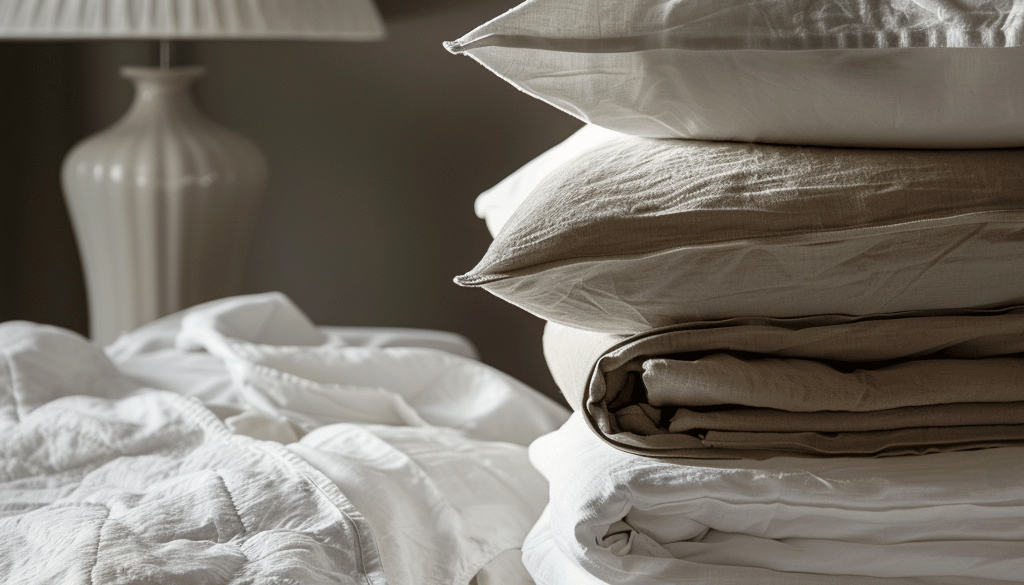
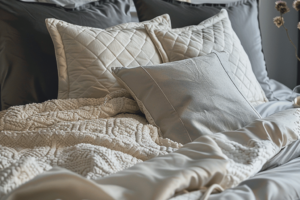

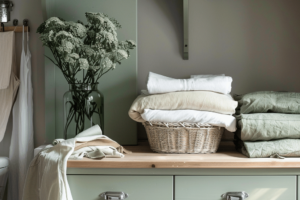
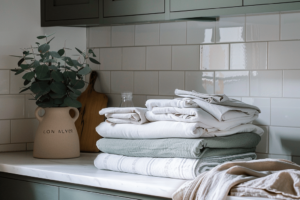
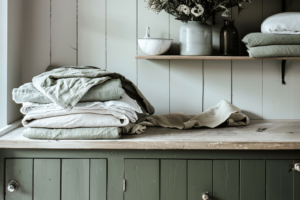
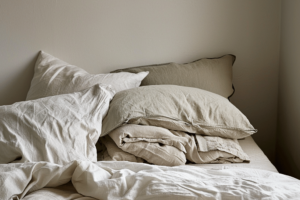
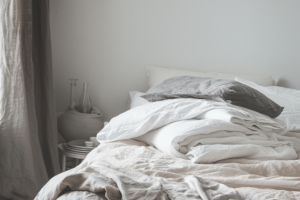
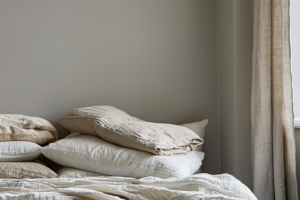
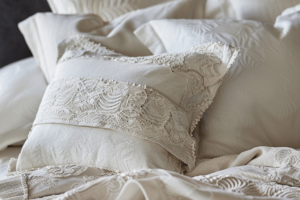
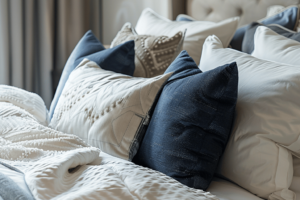
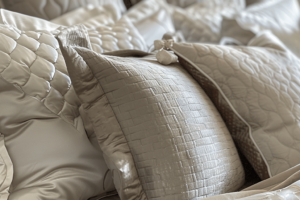

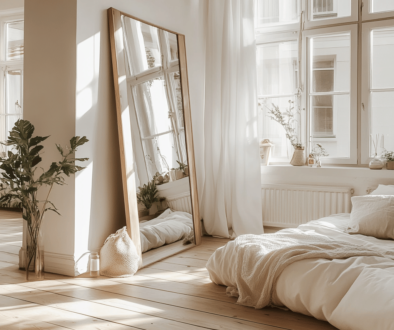

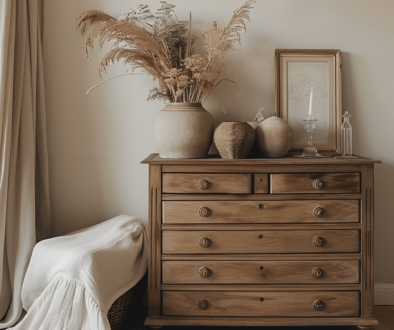
Winter Home Decor Basics: Cozy Up Your Space
October 14, 2024 @ 1:46 pm
[…] Debunking Thread Count Myths: What Really Matters for Quality Sheets […]